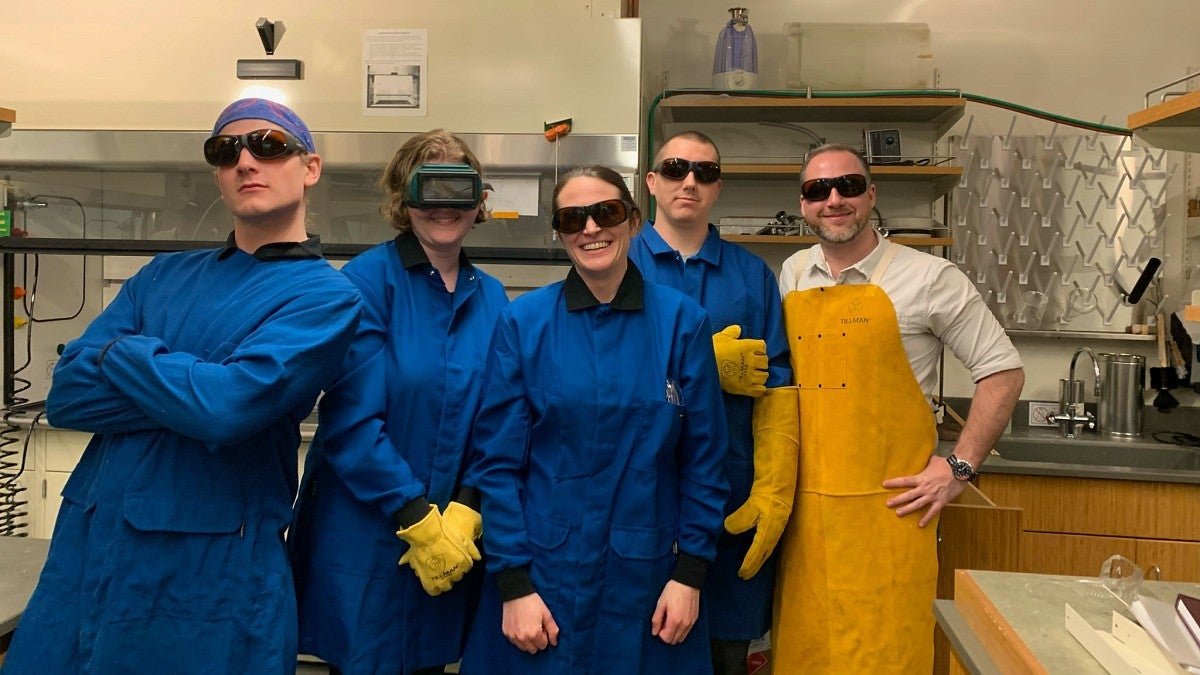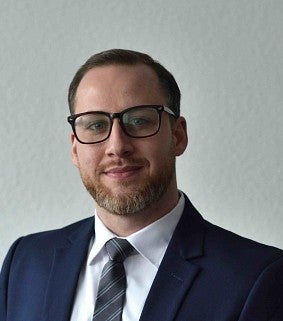
March 7, 2024
The future of energy storage promises to be green with University of Oregon researchers like Matthias Agne working on improving batteries to fuel global decarbonization efforts.
An assistant professor in the Department of Chemistry and Biochemistry, Agne and his lab are using fundamental science—based on thermodynamics and microscopic physics—to improve solid-state battery developments. And his lab provides a space for students to tackle diverse technical and humanitarian problems.
What is the broad scope of the Agne Lab?
Energy and environmental materials and devices are key components of a green revolution. The broad aim of this lab is to contribute to the overall decarbonization of energy production, storage, transmission, and utilization by increasing the efficiency of energy technologies through an understanding of the underlying material’s chemistry.
What is the purpose and primary mission of the Agne Lab?
We aim to use fundamental science, based on thermodynamics and microscopic physics, to solve technologically motivated materials problems. This lab uses a combined perspective from solid-state chemistry, materials science, and physics to tackle pertinent problems relevant to the development of solid-state batteries, fuel cells, thermoelectrics, quantum devices, and semiconductors. We are a theory group that uses computational and experimental methods to identify engineering design metrics to inform new technology development.
What initially sparked your interest in thermodynamics and technology-motivated research of energy?
What are, or will be, humanitarian problems, including sustainable energy and energy security, access to drinking water, and rising sea levels, have outcomes that can be greatly impacted by the technologies developed today. Our interest in doing basic science that is technologically motivated keeps our work focused on solving the impending problems that have a real impact on real people. I aim to make our science accessible and translational, from the laboratory to application, to have a widespread impact.

What makes you passionate about your work?
I have always been interested in material behavior. Even as a 10-year-old boy, I wanted to know why we could see through glass, but not other solids; why a paper clip would break if you bent it too many times; and so on. This inquisitive spirit follows me to this day, driving me to ask questions like, why do batteries fail, and how can we make longer lasting and faster charging batteries; how can we manipulate the flow of heat to improve device efficiency; and what new sustainable technologies can materials enable that haven’t been invented yet?
How do you hope your research will impact the scientific community and the world at large?
Our goal is to provide the scientific community with a better understanding of energy materials and devices through careful research while also transcending the academic space through practical technological implementation. Nevertheless, the research we do is ultimately a training ground for the amazing students working on these research projects. Preparing them with the necessary skills to take on diverse technical and humanitarian problems is one of the widest-reaching impacts that a research laboratory can have.
How do you hope your research will advance in the future?
Our current research in batteries is motivated by the prospects of new emerging battery technologies, like solid-state batteries, that promise higher energy densities, improved safety, and better sustainability.
As we work towards these next-generation battery technologies, we would like to understand the differentiation between chemical and electrochemical reactions and degradation at interfaces. Just like when I was a child, each question I ask seems to generate another. What are the vibrational origins of ion transport in solid electrolytes? How do thermodynamic potential landscapes evolve in time and space in operating electrochemical systems? How can our understanding of semiconductors and electrochemistry be applied to the exciting new field of quantum technologies?
—Bailey Meyers (journalism, '25) is a communications intern for the College of Arts and Sciences
